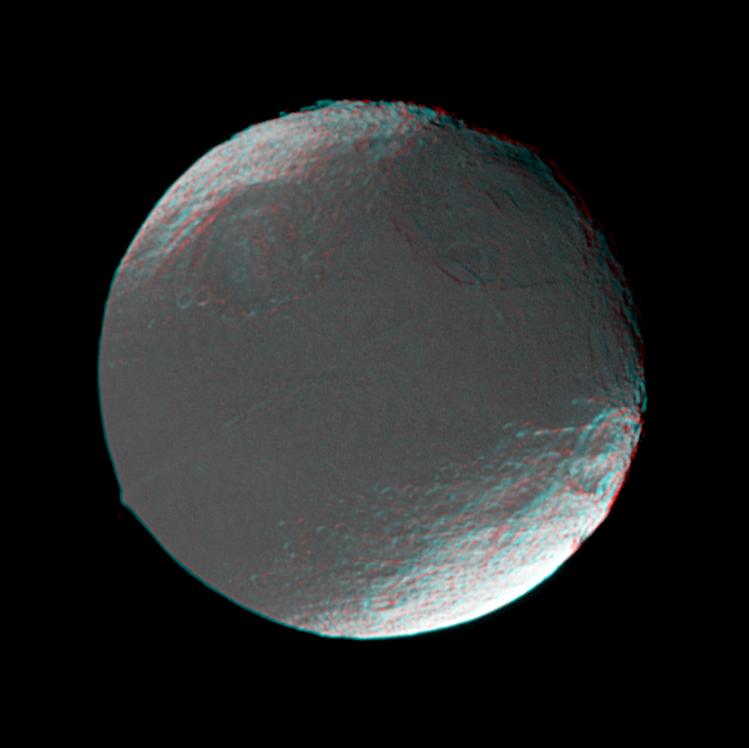Iapetus in 3D

| PIA Number | PIA06169 |
|---|---|
| Language |
|
This stereo view of Iapetus was created by combining two Cassini images, which were taken one day apart. The view serves mainly to show the spherical shape of Iapetus and some of the moon's topography.
The prominent linear ridge in the center of the dark area -- a place known as Cassini Regio -- marks the equator quite closely. The ridge was first discovered in this set of images and was seen at higher resolution in images taken during Cassini's flyby of Iapetus on New Year's Eve 2004. Some Cassini imaging scientists have suggested that the ridge may have a causal relationship to the dark material that coats the moon's leading hemisphere. The mountain on the left is part of the ridge, and rises at least 13 kilometers (8 miles) above the surrounding terrain.
The large basin near the terminator (at upper right) was detected in Cassini images from July and has a diameter of about 550 kilometers (340 miles). The large basin at upper left was newly detected in these images. The crater at far right (within the bright terrain) was known from the days of NASA's Voyager missions.
North on Iapetus is towards the upper left. The images were obtained in visible light with the Cassini spacecraft narrow angle camera on Dec. 26 and 27, 2004. Cassini's distance from Iapetus ranged from 880,537 to 716,678 kilometers (547,140 to 445,323 miles) between the two images, and the Sun-Iapetus-spacecraft, or phase, angle changed from 21 to 22 degrees. Resolution achieved in the original images was 5.2 and 4.3 kilometers (3.2 and 2.7 miles) per pixel, respectively.
The Cassini-Huygens mission is a cooperative project of NASA, the European Space Agency and the Italian Space Agency. The Jet Propulsion Laboratory, a division of the California Institute of Technology in Pasadena, manages the mission for NASA's Science Mission Directorate, Washington, D.C. The Cassini orbiter and its two onboard cameras were designed, developed and assembled at JPL. The imaging team is based at the Space Science Institute, Boulder, Colo.
For more information about the Cassini-Huygens mission visit http://saturn.jpl.nasa.gov . For images visit the Cassini imaging team home page http://ciclops.org .
Credit: NASA/JPL/Space Science Institute
